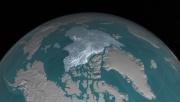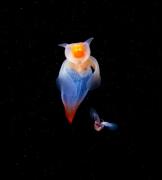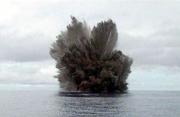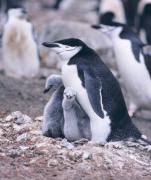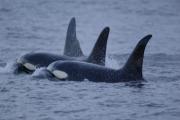Radio Program
Our regular Science and the SeaTM radio program presents marine science topics in an engaging two-minute story format. Our script writers gather ideas for the radio program from the University of Texas Marine Science Institute's researchers and from our very popular college class, Introduction to Oceanography, which we teach to hundreds of non-science majors at The University of Texas at Austin every year. Our radio programs are distributed at to commercial and public radio stations across the country.
Until 2011, no one knew that a couple of groups of dolphins found along the coast of southeastern Australia were a separate species from all other dolphins.
Burrunan dolphins are related to the two other known species of bottlenose dolphins. There are two groups of Burrunans—about 250 dolphins in all.
But today, no one knows how much longer the species might be around. It’s critically endangered. And it’s threatened by several hazards, including industrial chemicals. In fact, the species contains higher levels of one group of chemicals than any other dolphins in the world.
“Million Mounds” may be overstating the case a bit, but there’s no doubt it’s one of the most extensive deep-water coral reefs on the planet. Or make that part of one. Scientists recently discovered that the system extends far beyond Million Mounds—the biggest deep-water coral reef yet seen.
The entire complex stretches along the southeastern Atlantic coast of the United States. It’s a few dozen miles out, from Miami to near Charleston. It encompasses about 50,000 square miles, at depths of about 2,000 feet or greater.
For a tiny marine worm found in the Bay of Naples and elsewhere, life ends in a frenzy. The worms lose a lot of their internal organs, their eyes get bigger, and they rise to the surface. There, as they paddle furiously, they release sperm and eggs, creating the next generation. And it’s all triggered by moonlight.
Conditions in the Arctic Ocean may be about to switch gears. That could mean that Arctic waters would become more like those in the North Atlantic—a process known as “atlantification.” As a result, sea ice would disappear a lot faster than it has in recent years.
The rate of sea-ice loss peaked in 2007. The total amount of ice is still going down, but much more slowly than it was before. In December of 2023, in fact, the sea ice increased at a higher rate than in all but two other months in the past 45 years.
Some tiny sea snails may look like angels, but they act more like little devils. They rip their favorite prey from their shells. And the prey just happens to be a relative.
Sea angels are found around the world, from the arctic to the tropical waters near the equator. Most range from the surface to depths of a couple of thousand feet, although some have been seen more than a mile down.
Now playing in the southwestern Pacific Ocean: Sharkcano—an underwater volcano filled with sharks.
Officially, the volcano is Kavachi. It’s named for a fire god of a nearby culture. Its base is about three-quarters of a mile deep.
Kavachi is one of the most active volcanoes on the planet—there’s almost always a little something going on. Its first recorded eruption came in 1939. Since then, it’s erupted at least eight more times, including a long-lasting one from late 2022 into ’23.
Chinstrap penguins may be contenders for the title of “world’s greatest power nappers.” A recent study found that penguins that are watching over their eggs or chicks nod off more than 10,000 times a day—for an average of just four seconds per nap.
Chinstrap penguins live in Antarctica and nearby islands. Adults stand about two and a half feet tall, and weigh up to 10 or 12 pounds. They get their name from a thin line of black feathers that look like a chinstrap. They return to their nesting grounds every October or November—hundreds of thousands or more in a single colony.
It snows in the oceans. Bacteria, the skin cells of fish, fish poop, and bits of sand and dirt all clump together. These “snowflakes” can be up to an inch or two across. Many of them are eaten as they sink toward the ocean floor. But others float all the way to the bottom—a trip that can take weeks.
The snow falls all the way down even in the deepest waters, where the pressure can be a thousand times the surface pressure or greater. In fact, a recent study suggests the pressure might actually help the snowflakes survive in the deep ocean.
Killer whales near the Atlantic coast of Spain and Portugal have been living up to their name. From May 2020 through the end of 2023, they “killed” four boats and attacked hundreds of others. Marine biologists are still trying to explain why.
They’re not the first reported whale attacks in that part of the world. In fact, the earliest known attacks anywhere took place in the northeastern Mediterranean, near Constantinople. Those attacks were blamed on a single whale: Porphyrios.
According to an old saying, a rising tide floats all boats. And in the decades ahead, rising waters will threaten all coastal cities.
As our planet gets warmer as the result of human activities, sea level is rising. So cities along the coast will see more flooding—more often, with higher water levels. But a recent study says the risk isn’t the same for everyone.




